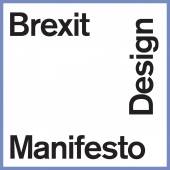Brexit Design Manifesto 2017
-
Presse20.12.2016
The UK's architects and designers are among the most creative and dynamic in the world. They generate billions for the economy and act as global ambassadors for our nation.
Design is one of our nation's greatest strengths and plays a key role in the "soft power" we project overseas. Our architects and designers are recognised for their creativity and expertise, creating world-class buildings, infrastructure, products, services, clothing and software.
London is acknowledged as one of the world's design capitals but this is far from being a London-centric industry – 60% of creative businesses are outside the capital.
The sector is a huge asset to the UK both culturally and economically. It is the fastest-growing part of the UK's creative industries, generating over £71.7 billion in goods and services a year and employing more than 1.5 million people.
Design has been at the heart of our identity for hundreds of years, from Thomas Chippendale and Christopher Wren to Charles Rennie Mackintosh and Robin and Lucienne Day.
Contemporary UK designers including Jonathan Ive, Norman Foster, Richard Rogers, Zaha Hadid, Tom Dixon and Barber & Osgerby have shaped the modern world and helped provide a globally recognised visual identity for our country, influencing our lives and our sense of who we are.
Architectural landmarks such as the Reichstag in Berlin and the Centre Pompidou in Paris fly the flag for our design expertise in the most prominent way possible, while we lead the world in sectors such as car and gaming design.
But design is not just about famous names and projects. It can help deliver better quality, more efficient and more enduring infrastructure across the country – as it has done for centuries via the work of the great architects and engineers of the past, whose landmarks still serve and help define our nation.
Brexit presents the architecture and design sector with a challenge. Design has benefited from the UK's membership of the EU. The continent is the most important export market for design services and the largest talent pool for employees.
But design is not only a European industry – it's global. Many "British" designers hail from overseas and were drawn to these shores by our nation's openness and international connections, and by our world-renowned design schools. Their creative minds have vastly enriched our nation's life and helped develop our unique design scene.
As the UK prepares for Brexit, the design sector is concerned that these competitive advantages will be lost. This would be a loss to the whole nation.
Here's what the sector needs from government to help it rise to the challenge. After Brexit, the UK will need a successful design industry more than ever, since designers solve problems and thrive in challenging circumstances.
In order to continue to grow, the architecture and design sector needs help in the following five areas:
Recognition: the government should take note of the sector's cultural and economic importance and pursue policies to help it thrive after Brexit. In particular, it should help the sector maintain and develop the strongest possible ties with Europe and the rest of the world.
Education: design should be championed in schools to inspire future generations of designers. Higher education requires investment to compete with the best in the world and must continue to attract the brightest overseas minds. Student exchange programmes and research links must be retained.
Recruitment: to retain their edge, design firms need to be able to recruit talent from anywhere in the world with a minimum of bureaucracy. And after graduating in the UK, the brightest overseas students should be able to join firms here, or start their own. EU employees already working for UK design firms must be allowed to remain in the country.
Manufacturing: with policies to support both small and large manufacturers, designers can help strengthen UK industry. Government should recognise that design can lead to better, more competitive products.
Intellectual property: with the UK no longer part of EU rights law, designers will need reassurance that they will be able to get international protection for their ideas with a minimum of cost and bureaucracy.
In summary, intelligently designed products, services and systems can help improve individual lives, business competitiveness and community cohesion.
But first, let's ensure that policies are in place to help the sector deliver a prosperous future for all.
-
* 1934 in Wien (Österreich), † 2014 in Wien (Österreich) Architekt, Theoretiker,...
-
20.12.2016Presse »
.










